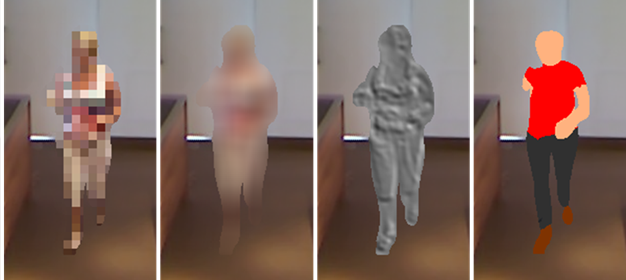ethicam: A Privacy-preserving Video-based System for Remote Monitoring of Older People
Contributor(s)
Francisco Florez-Revuelta, University of Alicante, Spain
Description
ethicam is a technological solution designed to improve the care of older people through cameras that μonitor their environment in an ethical and privacy-preserving way. Its main goal is to support independent and healthy living for older adults or people in vulnerable situations, without compromising their dignity or privacy.
The technology has been developed by the Research Group on Ambient Intelligence for Active and Assisted Living at the University of Alicante. The system uses advanced computer vision and artificial intelligence algorithms to process images in real time while protecting the identity and privacy of those being monitored. For instance, people may appear as avatars or abstract representations, allowing their actions to be understood without revealing explicit visual details.

The idea was developed in response to the shortage of caregivers and the ageing population, combining technical innovation with a strong emphasis on ethical and legal concerns. Unlike many commercial camera systems or surveillance tools, ethicam is built on the principles of privacy by design and by default, and it complies with regulations such as the EU’s General Data Protection Regulation (GDPR).
ethicam has two business models:
- B2B: aimed at care homes, offering a monthly subscription per camera, including installation and maintenance.
- B2C: planned for future rollout, using a “set-top-box”-style device that connects to home cameras and processes images locally before transmitting them to family members or caregivers.
ethicam stands out from other market options because it:
- processes images locally (without sending them to the cloud);
- is compatible with any commercial camera;
- allows different levels of visual filtering depending on the context and the viewer.
Beyond privacy, additional features are in development, such as fall detection, daily activity recognition, and adaptive visual displays of the environment. The platform is designed not only for safety but also to improve quality of life and ease the burden on caregivers.
Presenter(s)
Francisco Florez-Revuelta